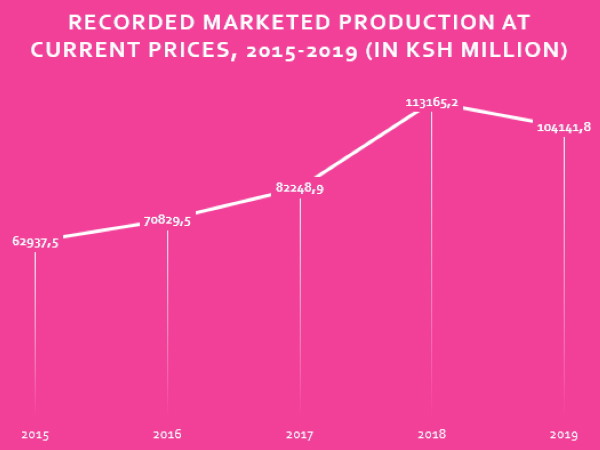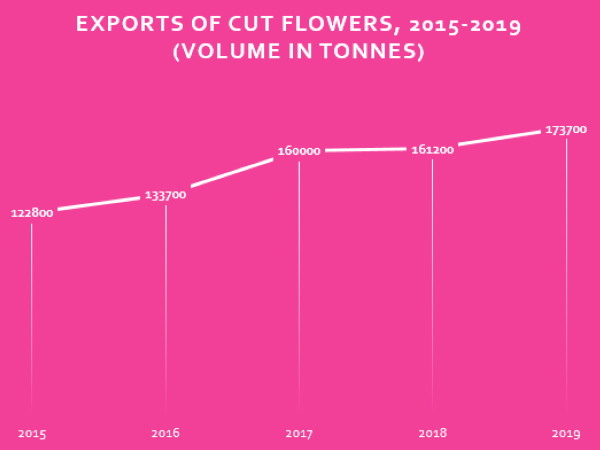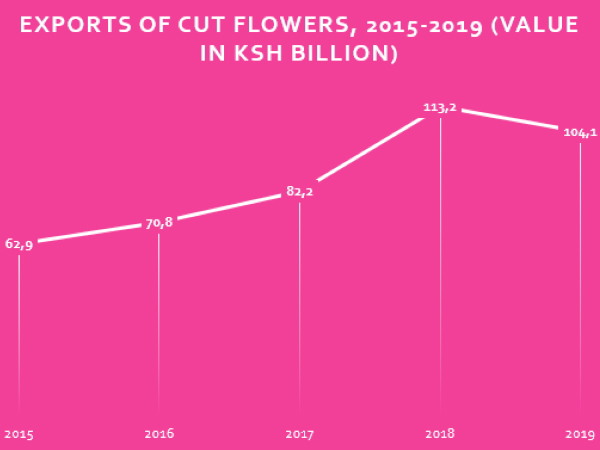The Kenya National Bureau of Statistics (KNBS) has released its Economic Survey 2020, detailing developments in the country's economy over the past five years. According to the bureau, the economic activity in the domestic economy remained vibrant in 2019 although the performance was slower relative to 2018. The real Gross Domestic Product (GDP) grew by 5.4 per cent in 2019 compared to a growth of 6.3 per cent in 2018. The growth, albeit slower than 2018 was spread across all sectors of the economy but was more pronounced in service-oriented sectors.

Cut flowers export: Higher volumes
Horticultural activities were mainly supported by growths in output of exported fruits (8.3 per cent) and cut flowers (7.8 per cent) in 2019. However, the volume of vegetables exported declined by 15.2 per cent during the same period owing to unfavourable weather conditions that characterized the first half of 2019, resulting to lower production.

Lower value
During the review period, the value of marketed fresh horticultural produce declined by 5.9 per cent from KSh 153.7 billion [1.43 billion USD] in 2018 to KSh 144.6 billion [1.35 billion USD] in 2019. This was mainly as a result of an 8.0 per cent contraction of the value of cut flowers from KSh 113.2 billion [1.06 billion USD] in 2018 to KSh 104.1 billion [971 million USD] in 2019.

Income cut for important commodity
So while cut flower exports grew in terms of volume, the value of these exports has actually gone down in 2019, compared to the previous year. According to the KNBS, this was attributable to lower prices offered in the international market. With export earnings from cut flowers accounting for 72 percent of total earnings from the country's horticulture exports, it remains to be seen what the Kenyan floriculture industry will look like at the end of 2020, which is already proving to be a tough year due to the COVID-19 crisis.
As Treasure Secretary Ukur Yattani put it when presenting the figures: "The global economy was projected to remain suppressed due to slowdown in industrial output, weak business confidence and increased trade tensions, even before the rapid spread of the Covid-19 pandemic. The weak global economy is likely to negatively impact on Kenya’s exports, especially horticultural products, as well as the tourism sector."
For more information: Kenya National Bureau of Statistics
Kenya National Bureau of Statistics
www.knbs.or.ke
